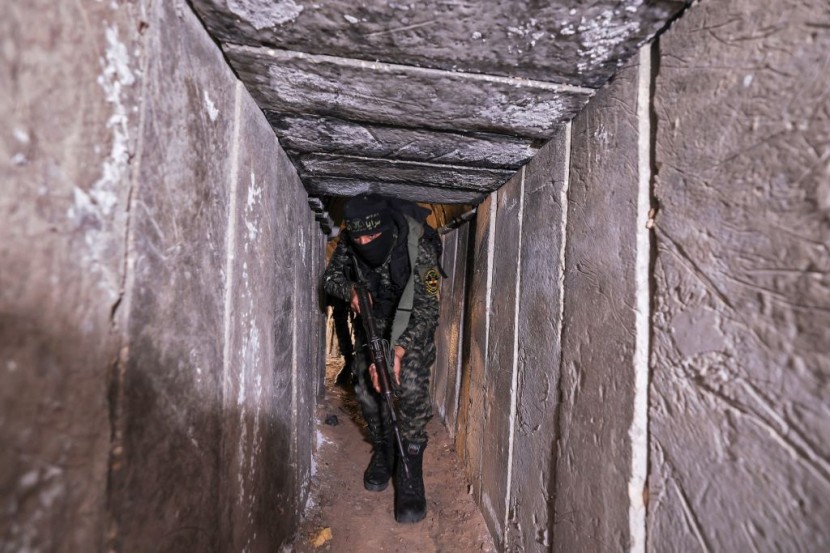Hamas' extensive network of tunnels beneath the Gaza Strip has been disclosed to potentially exceed 350 miles, surpassing initial estimates, according to sources.
Senior Israeli officials, speaking to The New York Times, have suggested that the tunnels could stretch anywhere between 350 to 450 miles, boasting an astonishing 5,700 entrance shafts. This estimate surpasses the original calculation of approximately 250 miles, marking a substantial increase in the scale of the underground infrastructure.
IDF Targets Hamas Tunnels in Southern Gaza

The New York Times report indicates that Israeli intelligence officials believe there are around 100 miles of tunnels under Khan Younis in southern Gaza. This area has become a focal point for intense fighting, with IDF troops actively searching for Hamas leader Yahya Sinwar and other high-ranking terror commanders believed to be hiding underground.
Despite the gravity of these estimates, it is crucial to note that the reported figures could not be independently verified. Discrepancies exist among Israeli officials regarding the precise extent of this subterranean network, emphasizing the challenges in obtaining accurate assessments.
The focus on destroying these tunnels intensified after a ground offensive was launched in response to the October 7 massacres perpetrated by Hamas-led terrorists, resulting in the deaths of 1,200 people and the abduction of around 240 hostages. Israeli forces have been diligently working to dismantle the tunnels, and the task has become more manageable as the offensive progresses deeper into the Strip.
Israeli defense officials emphasized the advancements in intelligence gathering, enabling quicker detection of tunnels. Previously, it might have taken a year to locate a single tunnel, but with the vast amount of intelligence amassed during the ground campaign, the process has become more efficient. The IDF has uncovered details on computers belonging to Hamas operatives involved in tunnel construction, including a list of families housing tunnel shafts in their residences, according to The Times of Israel.
Hamas Invests Millions in Multi-Purpose Tunnel Network
The complexity of the tunnels varies, with some designed for fighting or manufacturing weapons, while others cater to different ranks within the organization. Last week, the IDF disclosed that Hamas invested heavily in the tunnel network, utilizing over 6,000 tons of concrete and 1,800 tons of steel, likely costing tens of millions of dollars.
The issue of hostages within the tunnels adds another layer of complexity to the situation. While some were released during a late November ceasefire deal, it is believed that 132 hostages remain in Gaza, with uncertainty regarding their status.
Israeli officials and soldiers, having ventured into the tunnels, expressed astonishment at their scope, depth, and quality. The tunnels have become a strategic concern for Israel, intertwined with every military mission in Gaza.
Experts suggest that Hamas, lacking the resources for a conventional war, heavily relies on the tunnels as military bases, arsenals, and for covert movement. The organization has invested substantial funds in tunnel infrastructure, turning Gaza into a fortress over the past 15 years.
The daunting challenge of dismantling these tunnels requires meticulous mapping, checking for traps, and ensuring the safety of hostages before initiating destruction. The timeline for this arduous task is uncertain, with some estimating it could take years to completely disable the extensive tunnel system, New York Times reported.
Related Article : Iran Sentences Nobel Prize Winner to Additional Prison Term








